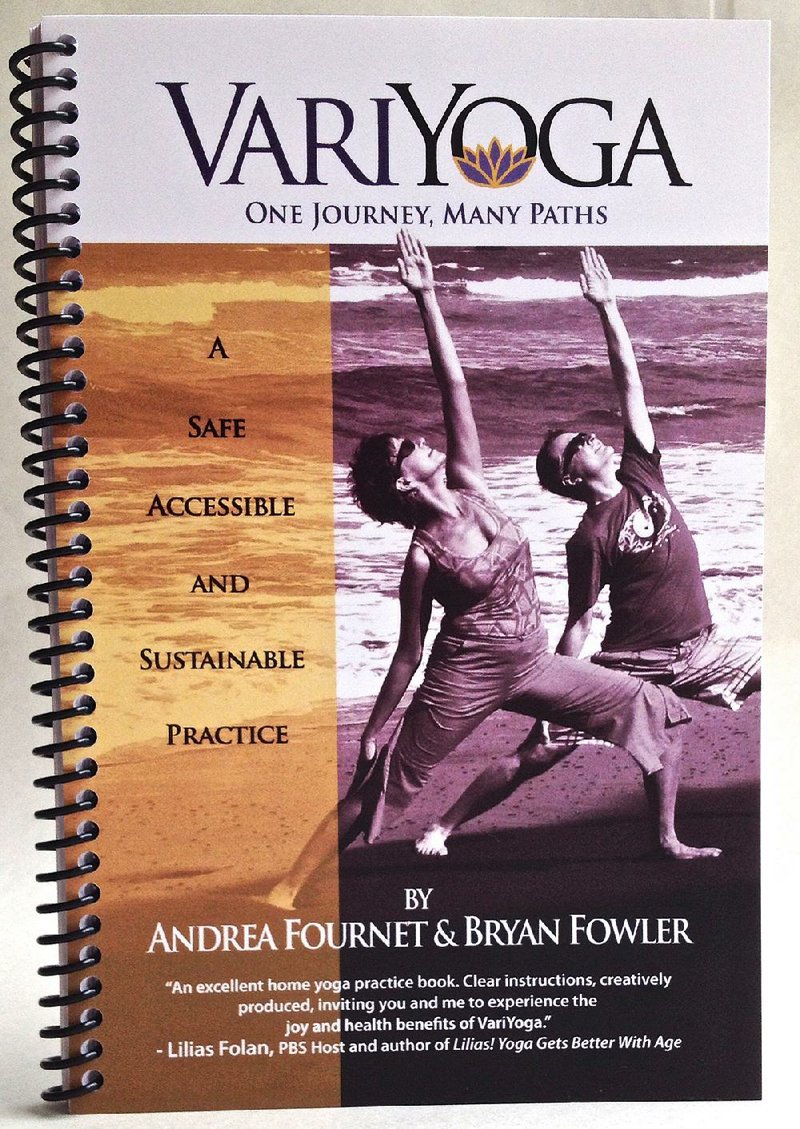VariYoga: One Journey, Many Paths, by Andrea Fournet and Bryan Fowler (aryoga.com/yoga-shop), 67 spiral-bound pages, $18.
What does VariYoga mean and why is there a book about it?
"Vari" suggests various and "yoga" suggests yoga.
As readers of this small, spiral-bound home-practice guide will learn, authors Andrea Fournet and Bryan Fowler are yoga teachers in Northwest Arkansas who developed this style of yoga. The book is a take-it-with-you guide to help students remember basic poses and flows.
The title dates from the day in 2003 when they put their heads together in an airport restaurant while waiting for their ride home to Arkansas from Hawaii. They'd just undergone a seven-day intensive workshop and were in the productive, careful frame of mind needed to describe what their individual practices were about -- what yoga did for them and what they had learned from sharing with their students.
They landed on "VariYoga" as a way to suggest the multiple influences they drew upon -- Fournet at Arkansas Yoga Center in Fayetteville and Fowler in his private studio in Fort Smith. Both like variety, and as teachers of folks who are not necessarily Yoga Journal models, they don't see modifications or adaptations of a pose or sequence of poses as a stalling maneuver until the student gets up to speed. They don't view modifications as taking away from a "real" practice.
In the process of easing various bodies into motion, the teachers have embraced newer versions of old poses. For instance, they point to their VariYoga Mermaid Twist warm-up, which doesn't include part of the traditional "Bharadvajasana Vinyasa" that might hurt people with bad hips.
VariYoga style, the book explains, now includes 14 sequences, from warm-ups to strengthening flows, and each sequence requires pose variations that accommodate different abilities. The book supplies black and white photos, verbal descriptions, English and Sanskrit names and mild humor.
"We saw the need to allow students to begin from wherever they were on their personal path and to allow their yoga practice to ebb and flow as their individual needs evolved," Fournet writes.
Can I do this style of yoga in a chair?
Yes, but this book will not lead you through chair poses.
Why spiral binding?
A book that lies flat doesn't have to be held open with one hand, meaning both hands are free to do other things, for example, give your foot a massage, such as the one described on Pages 64 and 65.
Good advice: "Respect your toe joints and do not twist or pull too hard."
Also "Giggle when appropriate."
Some supposedly beginner-friendly yoga guides are too confusing for novices. Were any beginners involved in the creation of the book?
The book designer, Steven Schneider, writes in the foreword that as a near total novice he advised the authors when he couldn't figure out what to do based on their written instructions, and they rewrote the instructions.
ActiveStyle on 06/22/2015
